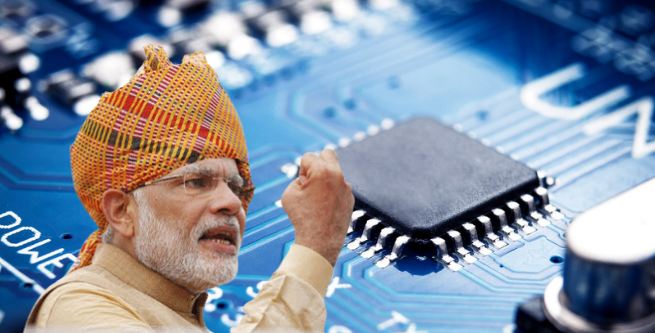For the last few centuries, India was a laggard when it came to technological innovation and leadership. Forget leadership, the country was decades behind the modern technological inventions, and this is one of the reasons behind the poverty and slavery of the country in the second millennium.
However, the Modi government is trying to change the equations and working hard to re-establish India’s leadership in technological progress. Today India is leading when it comes to data consumption, price of data, digital infrastructure, and many other areas related to digital technology. And the effort of the Modi government in achieving this feat cannot be ignored.
The government is trying to encourage domestic as well as foreign companies to invest in modern technologies. The 10 billion dollars production-linked incentive scheme for semiconductors is another example of the government’s efforts.
As per a press release by the Ministry of Electronics and Information Technology (MeitY), the government received an excellent response on its semiconductor PLI scheme. The companies that are willing to invest include Vedanta Foxconn JV, IGSS Ventures, ISMC for semiconductor fabs, while 2 companies viz., Vedanta and Elest have submitted applications for Display Fabs.
“Indian semiconductor market stands at USD 15 Bn in 2020 and is estimated to reach USD 63 billion by 2026. The semiconductor manufacturing process is a complex, capital and technology-intensive process of fabricating semiconductor wafers.
“India Semiconductor Mission, which has been set up as a dedicated institution for Semicon India Programme, has received 5 applications for Semiconductor and Display Fabs with total investment to the tune of USD 20.5 Bn (INR 153,750 crore),” the statement said.
Four companies viz., SPEL Semiconductor Ltd., HCL, Syrma Technology and Valenkani Electronics have registered under this Scheme for Semiconductor Packaging; and Ruttonsha International Rectifier Ltd. has registered under this Scheme for Compound Semiconductors.
Moreover, three companies viz., Terminus Circuits, Trispace Technologies and Curie Microelectronics have submitted applications under the design linked incentive (DLI) scheme. Also, the government is opening up Semiconductor Laboratory, Mohali – recently transferred from the Department of Space to MeitY – is being opened up for Indian semiconductor design companies.
India has so far only one semiconductor manufacturing plant at Chandigarh, that too government-run and very inefficient. The country imports semiconductors worth more than 15 billion dollars every year from countries like China, Taiwan, South Korea, and the United States.
India, despite being a low-wage and high skilled country, could not have a semiconductor foundry because the government in the country was not willing to spend money on manufacturing plants. Countries around the world succeeded in semiconductor manufacturing only with active government support, but in India, 10 billion dollars was too expensive for the government to get a semiconductor plant.
The previous three attempts (2007, 2013, and 2017) failed in setting up a semiconductor manufacturing plant in India because incentives were too little for the companies. The country recognized the importance of the semiconductor industry with the ongoing chip shortage which put many industries including automobiles on a halt.
Finally, it seems that the country will have indigenous semiconductor manufacturing capability given the fact that multiple companies have responded to the 10 billion dollars incentive. None of the global companies has complained about incentives being less than required and most of them praise the holistic approach the government has taken.
If the country succeeds in getting semiconductor manufacturing plants in this attempt, the name of the Modi government will go down in history given the huge importance of the industry, which will only increase in the coming decades. The name of Prime Minister Modi will be written in golden letters by future generations of India’s electronics sector entrepreneurs for successfully getting and chip manufacturing plant in India if the plan succeeds.
